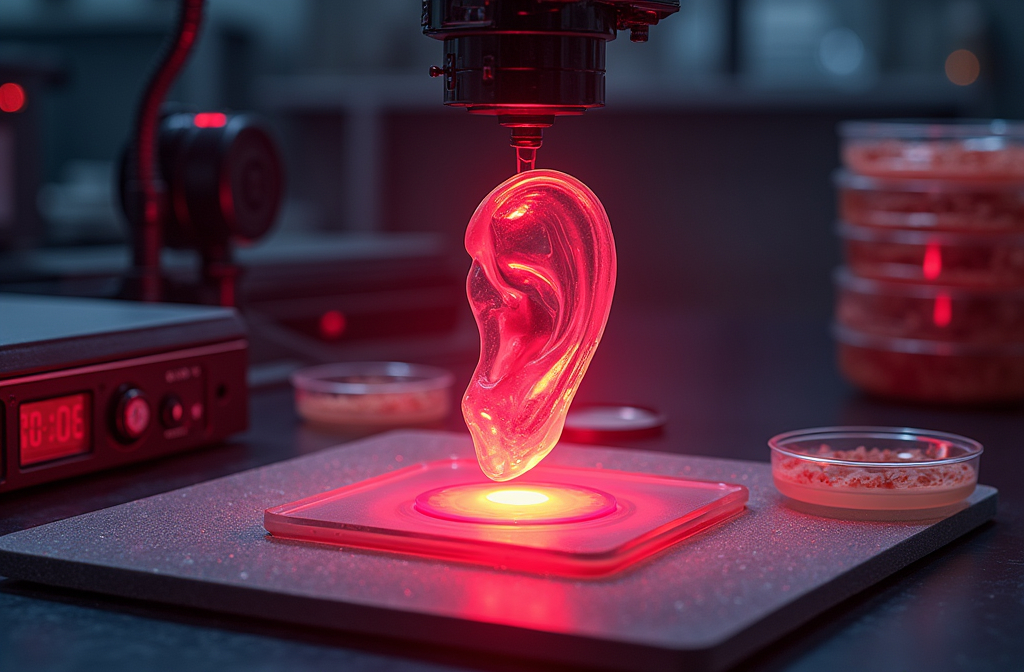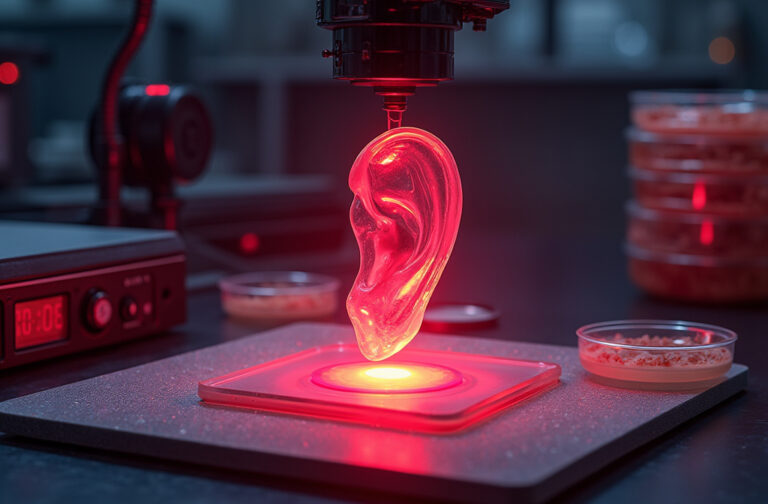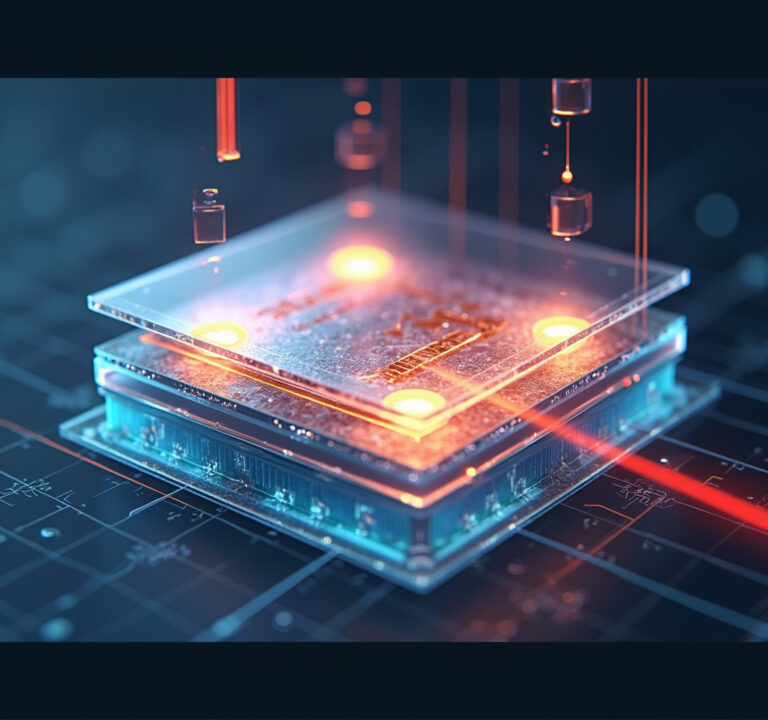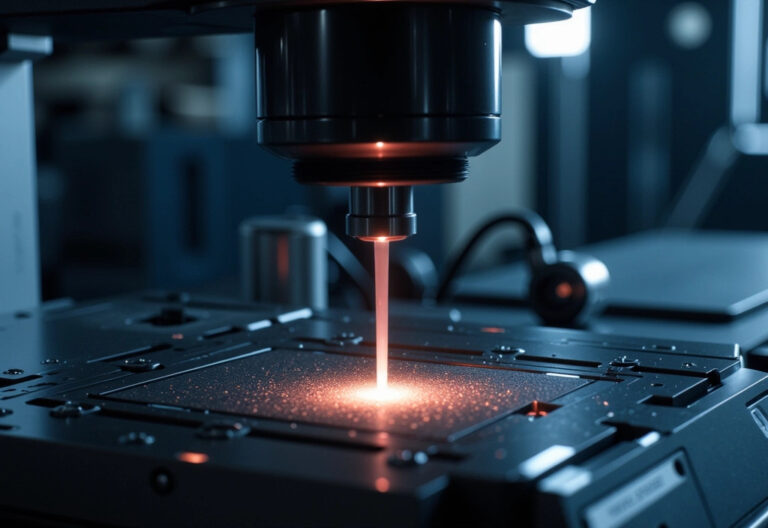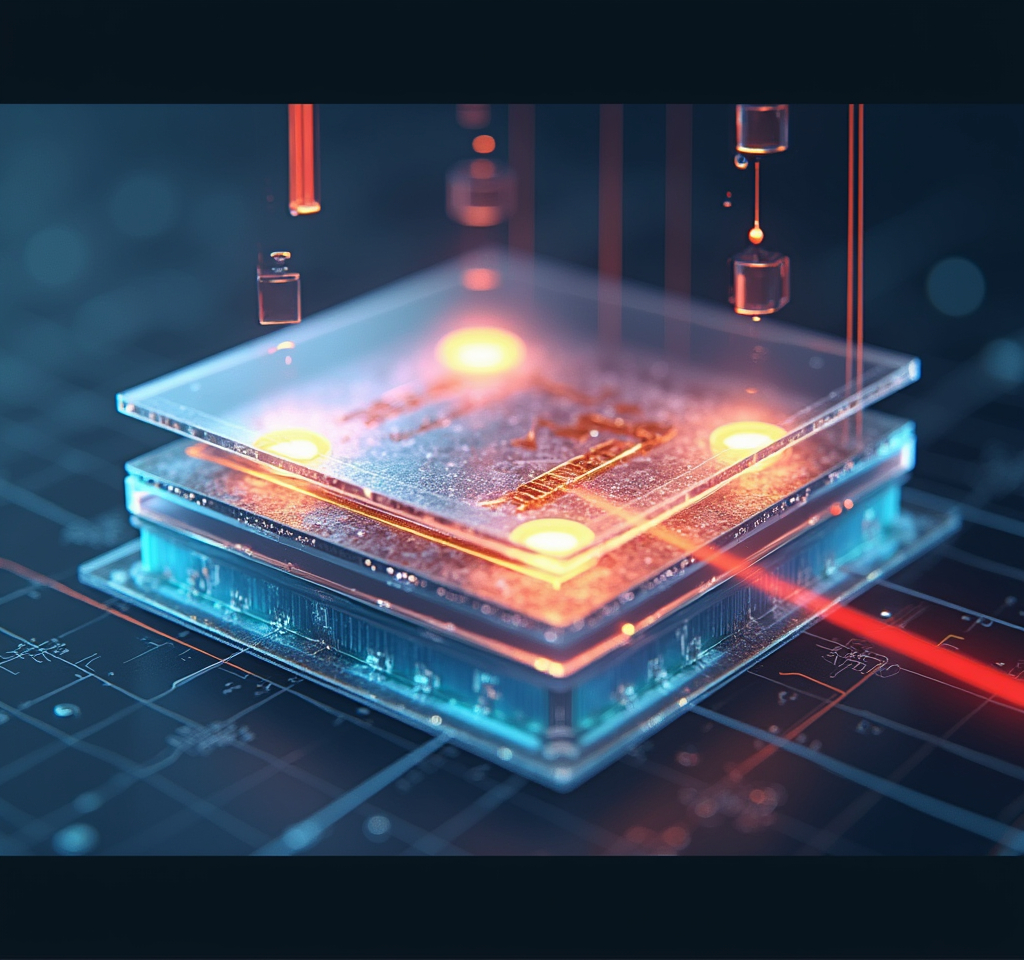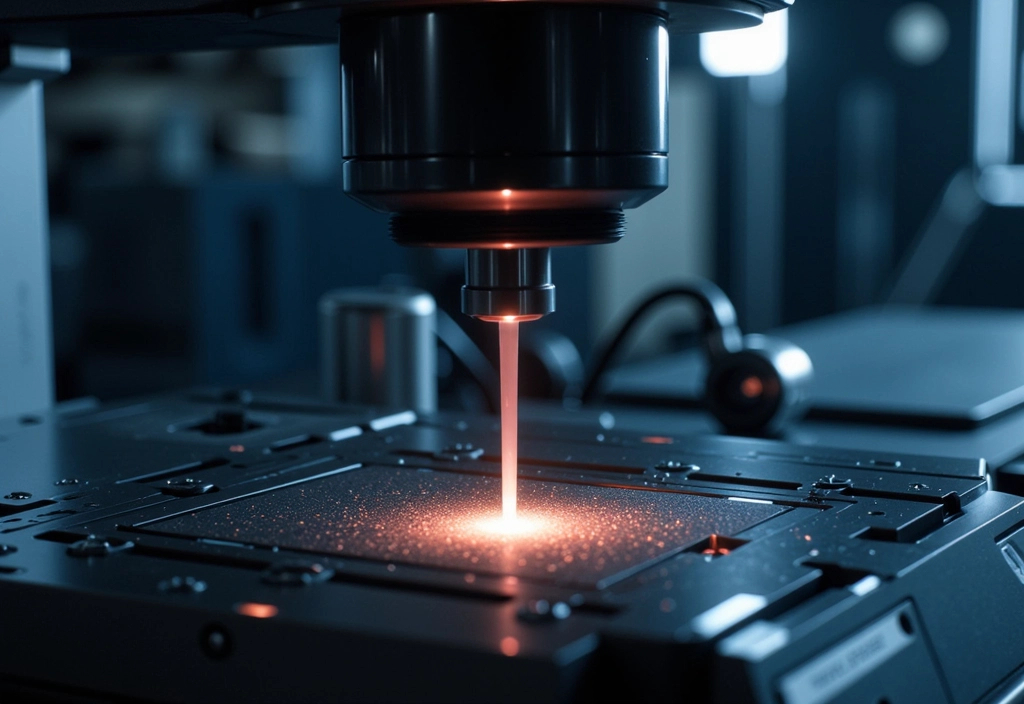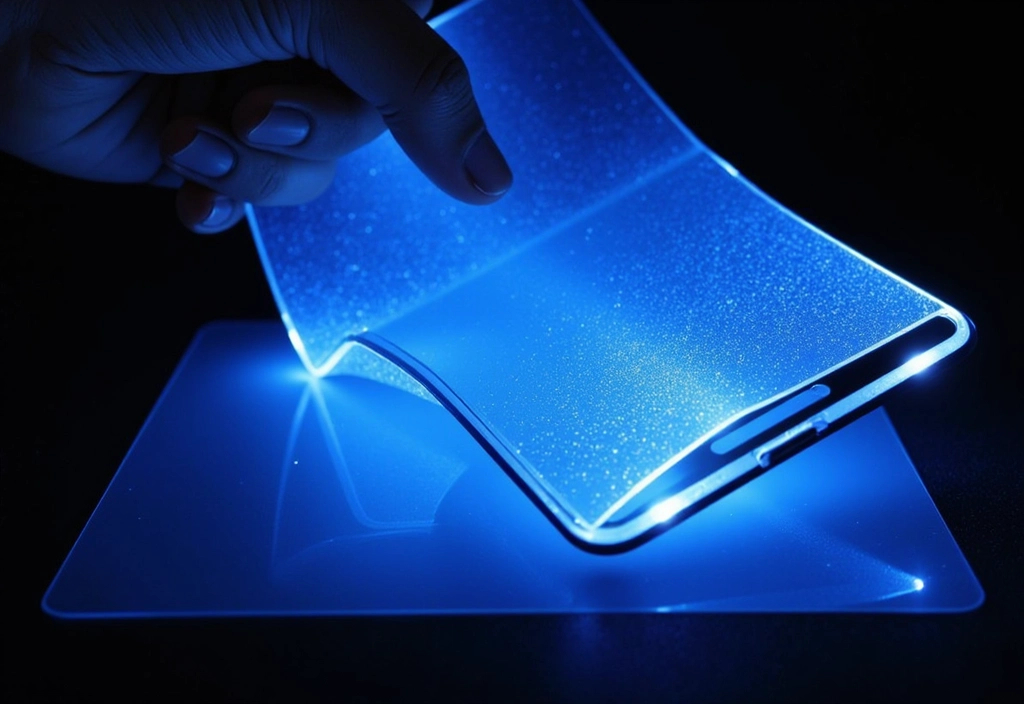Imagine a future where doctors print tissues or wound dressings directly onto your skin—with no surgery, no scars, and no toxic chemicals. Thanks to a groundbreaking new red-light photopolymerization system, that future just got a lot closer.
Researchers have developed a new “traceless” 3D printing method that uses safe red light—yes, the kind found in LED lights—to create clear, flexible hydrogels that are ideal for bioprinting. What’s more, this new approach leaves no chemical stains and is far safer for live cells than older methods.
Why This Breakthrough Matters
Traditional 3D printing in medicine often relies on UV light, which is great at starting chemical reactions—but terrible for your body. It can harm healthy cells, doesn’t penetrate tissue well, and often leaves behind toxic residues.
This new system ditches UV in favor of red light (625 nm), which is much gentler and can travel through skin and soft tissue. It’s powered by methylene blue, a dye approved by the FDA, and triethanolamine, a common, biocompatible ingredient.
Together, these components trigger the creation of soft, transparent hydrogels without leaving any color or residue behind—hence the name “traceless”.
How It Works (In Simple Terms)
Think of the process like setting Jell-O in the fridge—but instead of cold air, we use red light to “lock” the hydrogel into shape.
- A special gel is mixed with methylene blue and triethanolamine.
- Red light shines on the mixture, starting a chain reaction that forms a flexible, stable hydrogel.
- The methylene blue gets used up in the process, so the final product is completely colorless and safe.
Even cooler? This works through up to 5mm of tissue, meaning it could be used for transdermal printing—a fancy way of saying “printing through the skin.”
Real-World Applications
- Wound healing: Imagine printing a custom, clear hydrogel bandage directly onto a cut or burn—no stitches needed.
- Ophthalmology: Transparent gels mean this could one day help print lenses or corneal implants.
- Tissue engineering: Researchers successfully printed 3D structures filled with live fibroblast cells, which survived and grew for over a week.
- Drug delivery: These hydrogels could one day serve as “depots” implanted under the skin to slowly release medication.
Printing Cells with Style—and Safety
One of the biggest challenges in 3D bioprinting is keeping the cells alive. This system nailed it.
Researchers tested multiple versions of the gel, printing grids, ears, and even staircase models, all while keeping more than 70% of the embedded cells alive right after printing. After a few days, nearly 95% of cells recovered and continued growing—hugely promising for future implants or regenerative medicine.
Coolest Feature: It’s Light-Controlled Like Magic
The red light isn’t just safer—it’s smart. Turn the light off, and the process stops. Turn it on, and printing resumes instantly. This gives scientists super-precise control over when and where the gel forms—ideal for fine-tuned printing or even in-body procedures.
Any Drawbacks?
Sure. Printing at low temperatures is needed to keep the cells healthy, and lower gel concentrations reduce strength. But researchers are already testing improvements like thermo-responsive gels that behave better at body temperature.
Final Thoughts
This traceless red-light photopolymerization system is more than a lab curiosity—it’s a potential game-changer for modern medicine. It’s safer, cleaner, and opens the door to a whole new generation of printable treatments and regenerative therapies.
The future isn’t just bright—it’s glowing red.
Check out the cool NewsWade YouTube video about this article!
Article derived from: A. Eftekhari, K. R. de Graaf, E. Takmakova, H. Jongprasitkul, A. Efimov, S. Turunen, A. Kerr, M. Kellomäki, R. Luxenhofer, T. Laaksonen, N. Durandin, Traceless Photopolymerization with Non-Pulsed Red Light Enables 3D-Printable Cell-Laden Hydrogels. Adv. Mater. 2025, 2502386. https://doi.org/10.1002/adma.202502386

